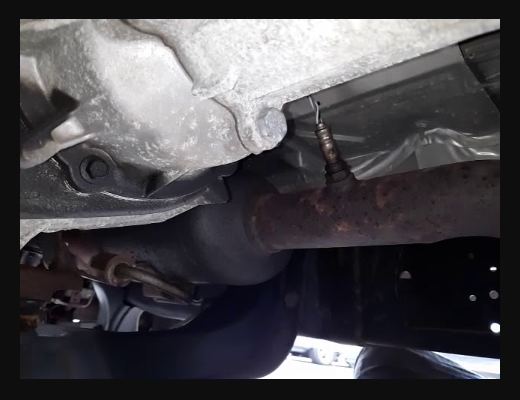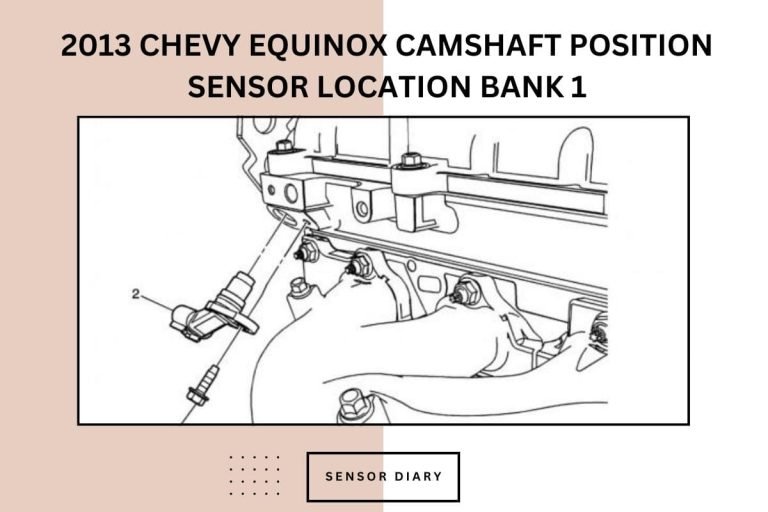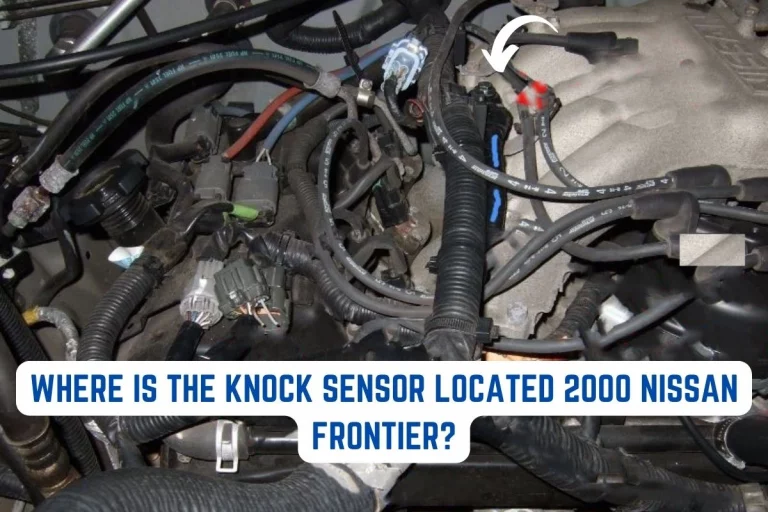Dodge Ram 1500 O2 Sensor Problems; Explained
The Dodge Ram 1500 is a well-known pickup truck that is known for its strength and durability. However, as with any vehicle, it can develop issues, and one common problem that Ram 1500 owners face is the oxygen sensor (O2 sensor).
In this article, we will go over the most common symptoms of a faulty O2 sensor in a Dodge Ram 1500, as well as the causes of these problems and the steps you can take to diagnose and repair the problem.
Table of Contents
- Dodge ram 1500 O2 sensor location
- Symptoms of a faulty O2 sensor in a Dodge Ram 1500
- Causes of O2 sensor problems in a Dodge Ram 1500
- Diagnosing the O2 sensor problem
- Fixing the O2 sensor problems
Whether you’re a seasoned mechanic or a concerned vehicle owner, this article will provide valuable insights into the operation of the O2 sensor and its significance in engine health.
Dodge ram 1500 O2 sensor location

In a Dodge Ram 1500, the O2 sensor is typically located in the exhaust system, either before or after the catalytic converter.
In most cases, one or more O2 sensors will be installed along the length of the exhaust pipe. The exact location of the O2 sensor varies depending on the vehicle’s year, make, and model.
Symptoms of a faulty O2 sensor in a Dodge Ram 1500
As every vehicle, the Dodge Ram also shows some symptoms when its O2 sensor goes bad, and the following are those symptoms I’ve identified with my experience of 10 years with Dodge RAMs.
- Reduced fuel efficiency:
When the O2 sensor fails, the engine’s air/fuel mixture may become unbalanced. This can lead to increased fuel consumption and decreased fuel efficiency.
- Engine misfires:
Engine misfires are caused by an incorrect air/fuel mixture and are characterized by a skipping or jerking sensation while driving. This can lead to a decrease in power and acceleration.
- The “Check Engine” light illuminates:
A faulty O2 sensor can cause the “Check Engine” light to illuminate, indicating a problem with the vehicle’s emission control system.
- Poor engine performance:
A faulty O2 sensor can reduce power and acceleration, making driving at high speeds or in hilly terrain difficult.
- Increased emissions:
An imbalanced air/fuel mixture caused by a faulty O2 sensor can result in increased emissions, including harmful pollutants such as hydrocarbons (HC) and carbon monoxide (CO).
- Rough idling:
Misfires in the engine and an incorrect air/fuel mixture can cause the engine to idle roughly, shaking or vibrating at idle.
- Stalling or hesitation during acceleration:
A faulty O2 sensor can cause the engine to stall or hesitate during acceleration, making smooth driving difficult.
- Reduced power and acceleration:
An imbalanced air/fuel mixture caused by a faulty O2 sensor can reduce engine power and acceleration, making it difficult to drive at high speeds or in hilly terrain.
Navien Air Pressure Sensor Bypass; Instructions
sensor diary
Causes of O2 sensor problems in a Dodge Ram 1500
Here are some causes for the situation it is better if you take a quick look at the following reason and examine the vehicle simply to check whether the following causes are there in your vehicle or not.
- Wear and tear:
The O2 sensor can become worn out and stop working properly over time, causing problems with the air/fuel mixture. This is especially common in older vehicles or those with high mileage.
- Contaminated fuel:
Dirt, debris, or other contaminants in the fuel system can clog the O2 sensor and cause it to malfunction. This can cause issues with the air/fuel mixture and reduce engine performance.
- Engine damage or malfunction:
Other engine issues, such as clogged injectors or a damaged mass air flow sensor, can impair the O2 sensor’s performance and cause issues with the air/fuel mixture.
- Exhaust leaks:
Exhaust system leaks can interfere with the O2 sensor’s performance, resulting in problems with the air/fuel mixture and decreased engine performance. A variety of factors, such as corrosion, damage, or a loose connection, can cause these leaks.
Diagnosing the O2 sensor problem
Now you know the common O2 sensor problems in a RAM as well as the causes for those. So it is time to teach you how to diagnose the O2 sensor problems on your own with the help of some tools. So here is how it is done.
- Checking for trouble codes:
Using an OBD-II scanner to check for trouble codes is one of the first steps in diagnosing an O2 sensor problem. This can help you determine whether the problem is with the O2 sensor or another engine component.
- Sensor and related component inspection:
A physical inspection of the O2 sensor and related components, such as wiring and connectors, can help determine if there are any visible signs of damage or wear.
- Sensor voltage readings comparison:
It is possible to determine if the sensor is functioning properly by comparing the voltage readings from the sensor to the manufacturer’s specifications.
- Visual inspection of the exhaust system:
A visual inspection of the exhaust system can help identify any leaks or other issues that may be interfering with the O2 sensor’s performance. This can include inspecting the exhaust pipes for cracks or holes, as well as checking the connection points for leaks.
Fixing the O2 sensor problems
There are several options to consider when repairing an O2 sensor problem in a Dodge Ram 1500. You may need to replace the O2 sensor itself, repair any leaks in the exhaust system, replace damaged engine components, or clean or repair the fuel system, depending on the cause of the problem.
- O2 sensor replacement:
If the O2 sensor is not working properly, it may need to be replaced. This is a relatively simple procedure that can be completed by a mechanic or an experienced do-it-yourselfer.
Dodge Ram 1500 O2 Sensor Replacement Procedure
- Gather tools and materials: You will need a socket set, O2 sensor socket, and anti-seize lubricant.
- Locate the O2 sensor: The O2 sensor is typically located in the exhaust system, either before or after the catalytic converter.
- Disconnect the battery: Disconnect the negative battery cable to prevent accidental electrical shock.
- Remove the old O2 sensor: Use the O2 sensor socket to remove the old O2 sensor from the exhaust pipe. Be careful not to damage the threaded portion of the sensor.
- Install the new O2 sensor: Apply a small amount of anti-seize lubricant to the threads of the new O2 sensor before installing it in the same location as the old one.
- Reconnect the battery: Reconnect the negative battery cable.
- Check for leaks: Start the engine and inspect for any exhaust leaks around the new O2 sensor.
Cost of O2 Sensor Replacement:
The cost of replacing an O2 sensor in a Dodge Ram 1500 varies depending on the vehicle’s year, make, and model, as well as labor costs in your area. The cost of replacing an O2 sensor, including parts and labor, can range from $200 to $400 on average.
What to do following a replacement:
Reset the “Check Engine” light: After replacing the O2 sensor, use an OBD-II scanner to reset the “Check Engine” light.
Drive the vehicle: Take a short test drive to ensure the new O2 sensor is working properly.
Keep an eye on the engine’s performance and fuel efficiency to ensure that there are no further issues.
- Repairing exhaust leaks:
If the O2 sensor is being harmed by exhaust leaks, these leaks must be repaired in order to restore proper O2 sensor performance. Repairing or replacing damaged exhaust pipes or tightening loose connections are examples of such tasks.
- Replacing damaged engine components:
If the O2 sensor is impacted by other engine issues, such as clogged injectors or a damaged mass air flow sensor, these components may need to be replaced to restore proper O2 sensor performance.
- Cleaning or repairing the fuel system:
If contaminated fuel is affecting the O2 sensor, the fuel system may need to be cleaned or repaired to restore proper O2 sensor performance. This may entail cleaning the fuel injectors, replacing the fuel filter, or repairing any fuel system leaks.



